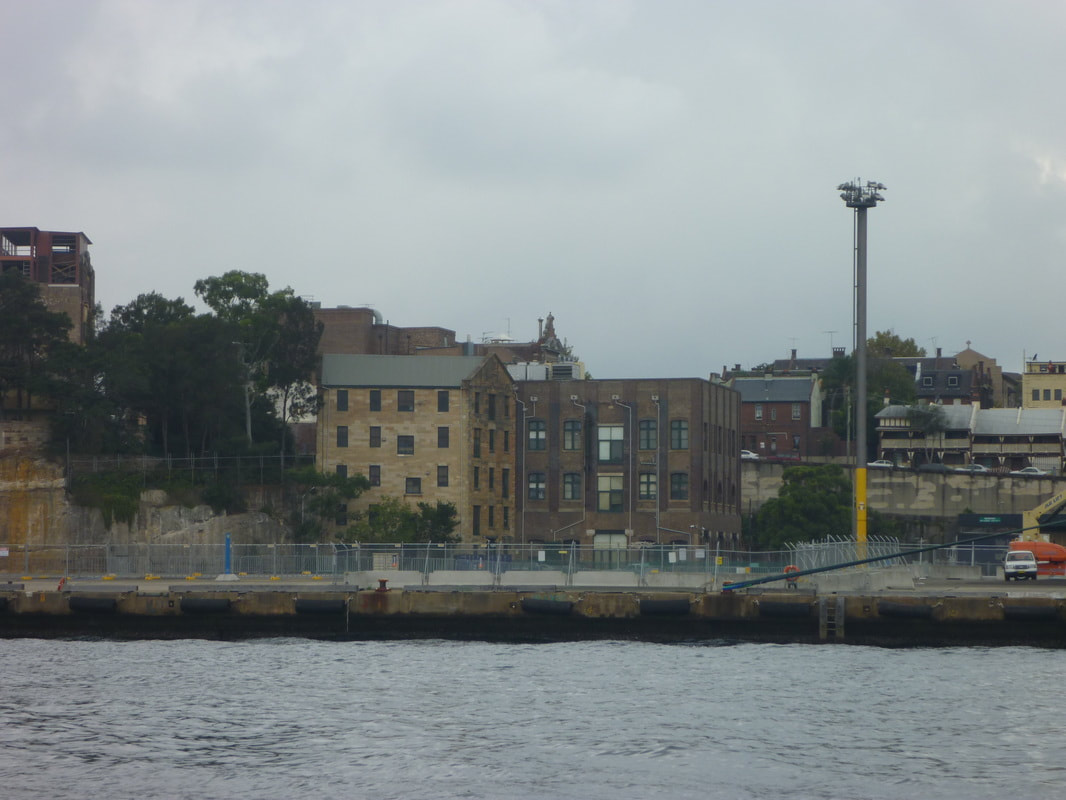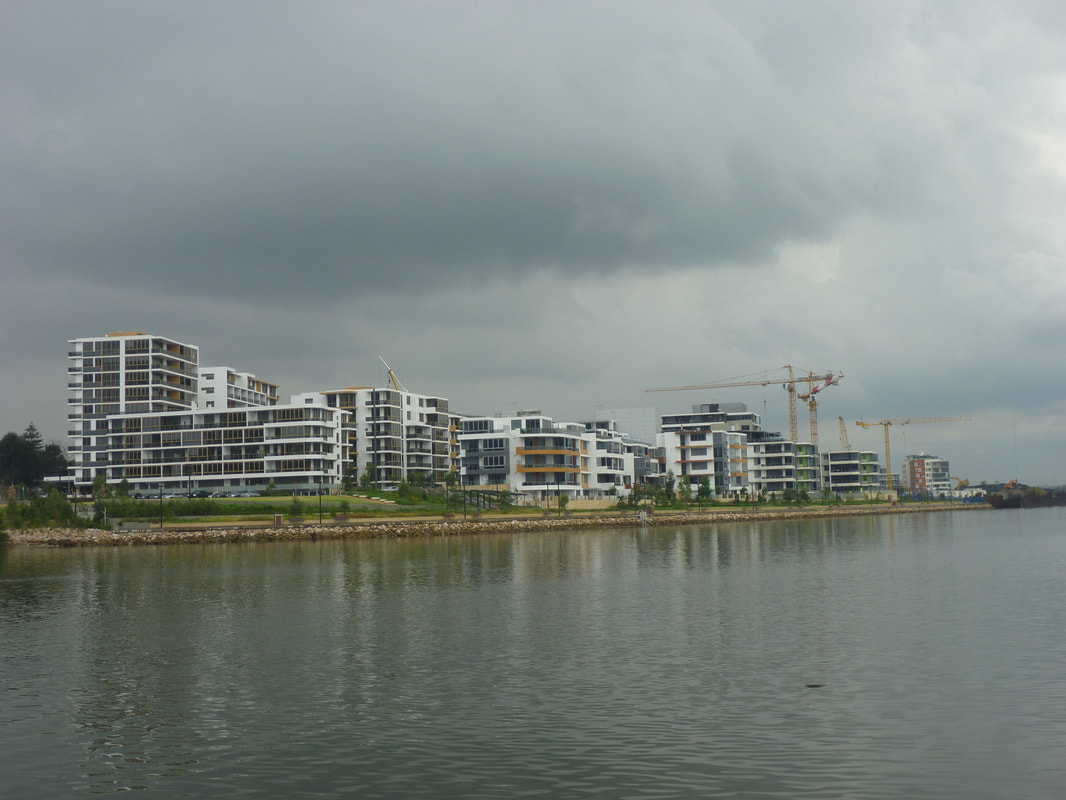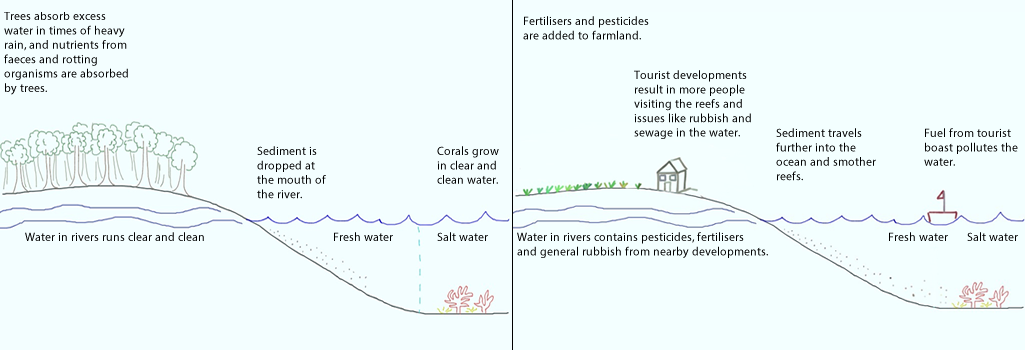|
Examine the Urban Observatory website.
Compare London, Tokyo and New York. Compare different aspects of these cities by choosing different themes from the left hand menu. Population Density and housing density: Describe the population and housing density of London. Where are the densest areas? Are particularly dense areas in a particular part of the city?How is the density spread out across the city - does it spread out radially? is it north/south, etc. How do these results compare with New York and Tokyo? How would you account for the differences? Work - Commercial and Industrial: Describe where the commercial areas of the city are located. Where are the industrial areas located? How does this compare to New York and Tokyo? Account for the differences. Movement - Road speed, traffic and airports: How would you compare the road speeds and traffic evident between the three cities? Why would this be the case? How would it impact on the way the city functions? What information can we gather about the importance of the airports in New York and London? Account for the difference in flight numbers between the two cities.
0 Comments
Your task is to create a presentation for your class which explains how one land use (residential, commercial or industrial) has changed over time. You must discuss each of the following: economic character, nature and location. Your presentation must include:
- statistics which support your key points - at least two maps (to show change over time) - an article which supports what you are stating You must prepare and distribute a two page handout. Your presentation should go for 8-10 minutes and should include a range of simulus (visual aids, etc). Articles: Paying huge Sydney prices for tiny places. Read more... Population pressure
Increased population pressures on mainland North Queensland have resulted in increased levels of pollution and physical activities related to tourism on the reef area. Tourism The outstanding beauty of the reef attracts millions of tourists each year. The pressure placed on the reef as a result of tourism includes developments on the shoreline (and associated sewage, rubbish) increase boating activity (including oil spills, coral breakage as a result of boat propellers), and tourist activities (breaking corals while snorkelling, walking on reefs, accessing sensitive areas). Agriculture (particularly Sugar cane farming) Agriculture, especially sugar cane farming on the mainland, has resulted in increased sediment and fertiliser run-off from cane farms. In recent years, a downturn in global prices for sugar cane has resulted in farmers using greater amounts of chemicals. These chemicals run off into coastal streams and result in algal blooms and eutrophication in some areas of fringing coral near the mainland. Sugar cane farmers apply fertilisers containing Nitrogen (N) and Phosphorous (P). Many put on extra fertiliser in case of heavy rain (so it is not all washed away). The introduction of bananas as a crop in the area further increased the use of fertilisers. Of all fertilisers applied, only a third is absorbed by the crops. The rest is either evaporated, enters groundwater or runs off into nearby rivers or canals. Sugar cane crops need water to be drained away quickly. If the crops are left in water the roots will rot. As a result canals were built to drain water away quickly from the crops in case of heavy rain. These canals, or drains, reverse the cycle of how wetlands are meant to function. Rather than regulate and slow the flow of water, the water is quickly moved away from the site and into main river systems. The water rushes off the land carry fertiliser, soil, pesticides, etc. Actually pinpointing the sources of sediment is difficult, but it is believed that most is coming from land which has been tilled and let lie fallow. Sediment is also coming from bank erosion. Since European settlement erosion has accelerated due to clearing of land (less tree to stabilise soil). Due to erosion the river can erode into paddocks. There is believed to be four times more sediment reaching the coast than prior to European settlement, and in some places it is closer to 40 times. Fishing Recreational and commercial fishing have had major impacts on the reef. Commercial prawn fishing accounts of a large proportion of Queensland's Fisheries output. Approximately 6 million kgs of prawns area harvested in a good year. Recreational fishing in the General Use zones of the Great Barrier Reef Marine Park (GBRMP) accounts for 75% of the fin fish taken from the reef each year. Commercial fishing includes fishing for crayfish, finfish, reef fish, barramundi and tuna. An examination of one net which washed ashore showed it contained 14 turtles, a shark and a dugong. Gamefishing has long been an important industry in North Queensland. Pisciculture is a trend involving raising fish in fish farms (e.g. tiger prawns and barrmundi). Dredging Dredging is removing sediment from the bottom of a river bed, harbour, etc and placing it elsewhere. Links: Abbot Point: Dredging dumping permitted within Great Barrier Reef waters Abbot Point approval: Tour operators disappointed by Great Barrier Reef dredge spoil decision Approval of Galilee mega mine leaves Reef strategy in tatters. Landuse impacts on Great Barrier Reef water quality and ecosystem condition Dredging set to swamp decades of Great Barrier Reef protection WWF - Queensland resources sector needs leadership If you are planning an excursion to the Great Barrier Reef you have a couple of options - base yourself at Cairns or Port Douglas and travel out to the reef and surrounds, or base yourself out on one of the islands. Your decision will be determined by cost, availability and also whether you are just focusing on coral reefs on your trip or a rainforest or wetland ecosystem as well. You might like to look into one of the research stations which are located nearby. Heron Island Research Station and Moreton Bay Research Station are run by The University of Queensland. These venues offer excellent facilities such as lecture theatres, computer rooms, laboratories, diving and snorkelling equipment, bunk room accommodation, the option of on-site catering. Lizard Island Research Station is run by the Australian Museum. The station offers accommodation, boats, laboratories, aquarium systems, diving and more. If you are based at Cairns or Port Douglas then you will probably use the tour operators operating such as Quicksilver or Sunlover Reef Cruises, where you can get a Guided Snorkelling Safari Tour where students learn about the basics of coral and fish identification, reef ecology and marine conservation. Small World Journeys offer a Student Trip: Ecosystems at Risk: Reefs and Rainforest, 6 day trip. This includes all accommodation, most meals and trips. There is also a 4 day Ecosystem at Risk: Coral Reefs Study available. Management of the Coral Triangle Government Collaboration The six nations of the Coral Triangle came together in 2009 to form the Coral Triangle Initiative on Coral Reefs, Fisheries and Food Security. The countries use national coordinating committees, learning networks, regional exchanges, capacity building workshops to come together to share their knowledge and expertise. The Coral Triangle Support Partnership (CTSP) is an initiative run in collaboration with WWF, The Nature Conservancy, Conservation International and USAid, among other groups. It is a 5 year, $32 million program designed to support the governments of Indonesia, Malaysia, Papua New Guinea, Philippines,mSolomon Islands and Timor-Leste. The initiative is aimed at addressing over-fishing, destructive fishing practices, pollution and climate change. CTSP assists in setting up and managing Marine Protected Areas, to conserve reefs and fish, protect shorelines, improve fisheries catches for locals, and enhance quality of life for communities. Each of the six nations has a National plan of Action which is aligned with the Regional Plan of Action set out by the CTI. Sustainable fishing Fishing practices are regulated, management practices align with stock distribution, spawning areas and migration routes are monitored and regulated. Malaysia - 5.5 million hectares of marine ecosystems under protection. - Training of wildlife wardens to manage coastal resources - Stopped issuing permits for export of endangered humphead wrasse, and buy back systems to buy out the species from fish farms. - Maliangian Handicraft Workshop - provide alternative lifestyle options to fishing. Papua New Guinea - Empower local communities and their traditional laws - Workshops, field trips, training - Locally Managed Marine Areas - Manus Environmental Communities Network - share best practice with communities - Milne Bay - fishermen trained and engaged in environmental monitoring, find raising and reporting. - Mahonia Na Dari Research and Conservation Centre - The Mahonia Na Dari Research and - Conservation Centre is a non-government organisation that develops marine environmental conservation education for children and local communities around Kimbe Bay, Papua New Guinea. Solomon Islands - Volunteer rangers in Western Provincetown monitor and tag turtle populations using their skills in water acrobatics and free diving. - Development of Best Practice Guidelines - Building the capacity of local groups such as the Gizo Marine Conservation Area Management Committee and the Tetepare Descendants Association - Tetepare Island - ecotourism, local rangers, gather data, patrol the island, monitor harvesting and confiscate illegal catches. Philippines - 20,000 hectares of Marine Protected Areas. - Government to map and plan ways to increase fish numbers for the future. - Mangrove planting projects Timor-Leste - Establishment of Niño Konis Santana National Park - Community awareness -workshops, film screenings, hands-on training, - Surveys of coastlines WWF Infographic - Marine protected areas in the Coral Triangle A map showing the Marine Protected Areas (MPAs), Coral Triangle boundaries, value of fisheries, subsidies paid to commercial fisheries, and funding required to support MPAs. See more... New hope for fisheries development in the Pacific. Financing marine protected areas. Coral Triangle Center Protecting marine turtles in the Indo-Pacific. Building a sustainable live reef food fish trade Promoting sustainable tuna fisheries in the Coral Triangle Tackling fisheries bycatch Effectiveness Malaysia - Traders continued to keep wrasse in "grow out" cages Papua New Guinea- difficult to coordinate as there are diverse systems of traditional law. Solomon Islands - geographical spread- managed by local communities. Lack of technical skills, scientific data, and resources such as equipment and fuel can hinder management. Complex clan structures and customary land ownership. Philippines - vulnerable communities Timor-Leste -limited information of reefs make it difficult for planning and decision-making. Something's fishy Legal and Policy gaps in the management of the live reef food fish trade in the Coral Triangle.
Location
Human impacts
Below is an infographic embedded that explores the destruction and overfishing of reefs of the Philippines 
From Visually. WWF has created an Infographic exploring seafood caught in the Coral Triangle. It incorporates a map showing the value of the tuna industry and live reef food fish industry, as well as levels of over fishing in the region. See the infographic... Links to explore human impacts on the Coral Triangle: Coastal development destroying reefs off Phuket An overview of shark utilisation in the Coral Triangle region. Problems in the Coral Triangle Climate change, reefs and the Coral Triangle
Links:
Coral Triangle facts WWF - Coral Triangle Coral Triangle Initiative Fishing for a fair deal in the Pacific and why the EU must change their game. Click to view a range of article on the Coral Triangle from the Guardian. WWF Infographic - Turtles in the Coral TriangleAn infographic showing the life cycle of turtles, threats to turtles, statistics on survival rates, and protection statuses of different species. See more... 
From Visually. |
Categories
All
Archives
May 2024
|



